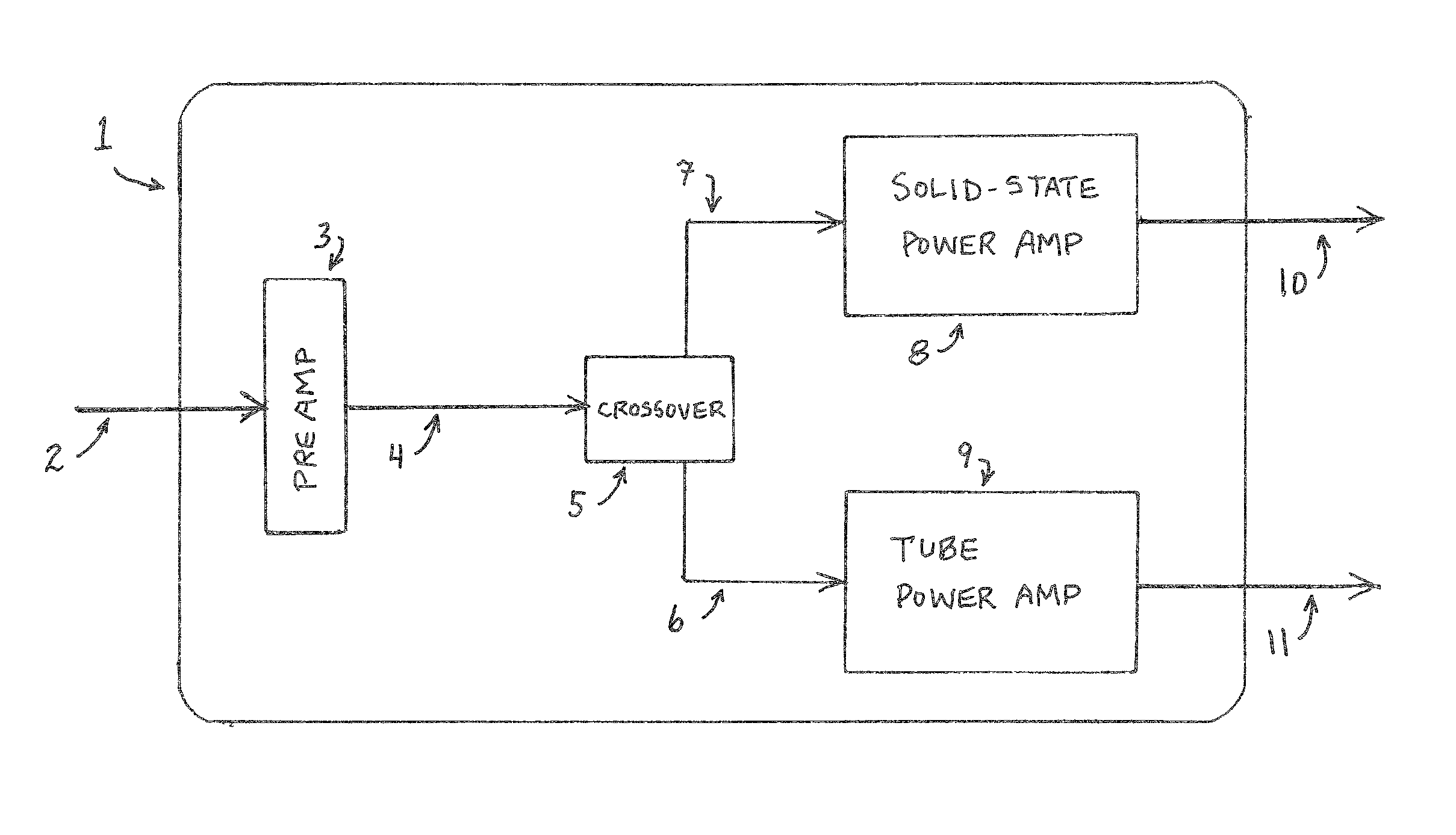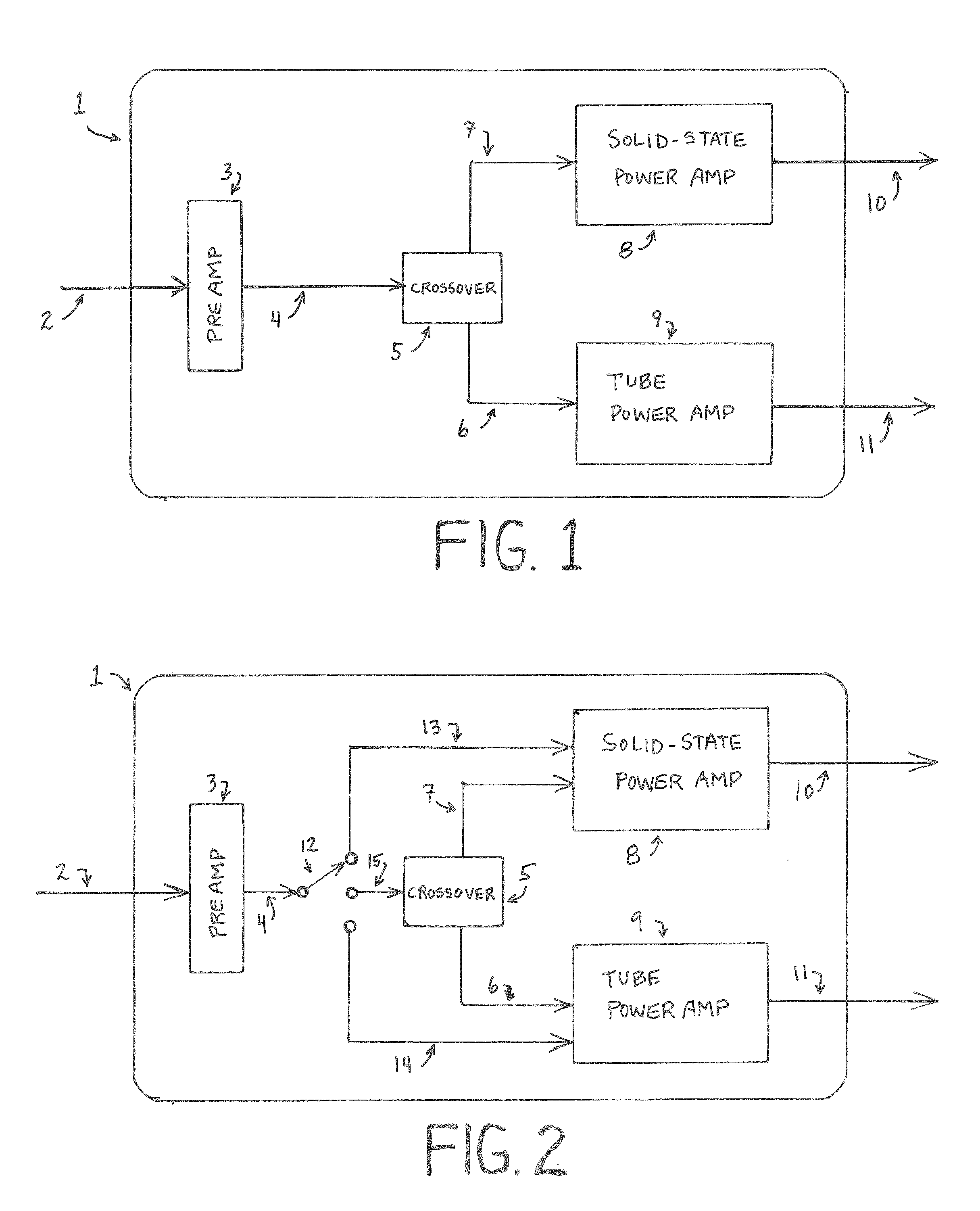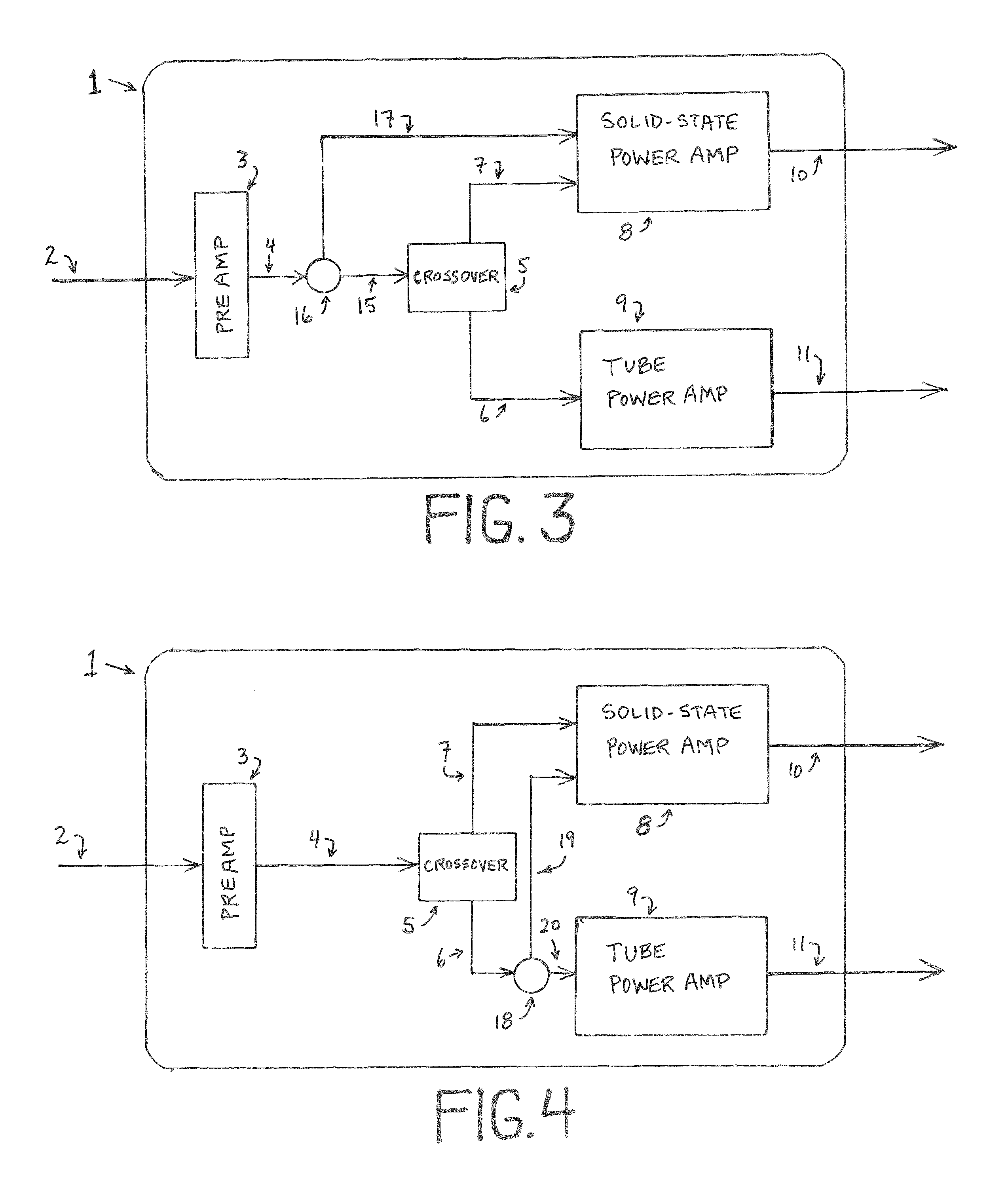Frequency dependent dual solid-state and vacuum tube power amplifier-section instrument amplifier
a technology of vacuum tube power amplifiers and solid-state amplifiers, which is applied in the direction of amplifiers, low-frequency amplifiers, instruments, etc., can solve the problems of less desirable sound quality, more ‘harsh’, and more energy, and achieve the effect of pleasing and musical
- Summary
- Abstract
- Description
- Claims
- Application Information
AI Technical Summary
Benefits of technology
Problems solved by technology
Method used
Image
Examples
Embodiment Construction
[0014]The drawings are for the purpose of illustrating the inventor's preferred embodiments and not for the purpose of limiting the invention.
[0015]FIG. 1 shows the amplifier 1, which includes the preamp 3, active 2-way crossover 5, solid-state power amplifier 8, and tube power amplifier 9. The audio input from a musical instrument is shown 2, enters the preamp, where pre-amplification and equalization occur, and other processes such as limiting and / or compression may also take place. The audio 4, leaves the preamp and goes to the crossover 5, where audio frequencies below the crossover point are sent to the solid-state power amp 8, via signal path 7. Signal path 4 is where a common effects-loop and / or direct-out would be located. Audio frequencies above the crossover point are sent to the tube power amp 9, via signal path 6. The outputs 10 and 11 are sent to external loudspeakers.
[0016]FIG. 2 shows the addition of a switch 12 which allows the selection of sending the full-range aud...
PUM
 Login to View More
Login to View More Abstract
Description
Claims
Application Information
 Login to View More
Login to View More - R&D
- Intellectual Property
- Life Sciences
- Materials
- Tech Scout
- Unparalleled Data Quality
- Higher Quality Content
- 60% Fewer Hallucinations
Browse by: Latest US Patents, China's latest patents, Technical Efficacy Thesaurus, Application Domain, Technology Topic, Popular Technical Reports.
© 2025 PatSnap. All rights reserved.Legal|Privacy policy|Modern Slavery Act Transparency Statement|Sitemap|About US| Contact US: help@patsnap.com



